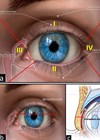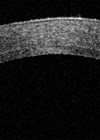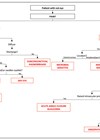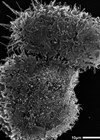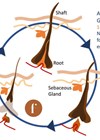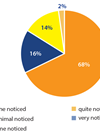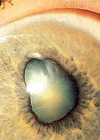Ophthalmology
Periocular burns: a literature review of classification, management protocols and outcomes of treatment
The author provides a review of the current literature regarding the principles of classification, management protocols of acute ocular and periocular burns and the role of the burn and oculoplastic surgeon involved in their care. More than two-thirds of facial...
DMEK vs. UT-DSAEK: has the debate been finally concluded?
In recent years the surgical treatment of corneal endothelial dystrophy has progressed tremendously. Descemet’s membrane endothelial keratoplasty (DMEK) is the newest iteration in the line of rapid surgical advances that has taken place. However, the previously accepted gold standard prior...
The ocular manifestations of COVID-19: an overview of current literature
Although respiratory symptoms are the most frequent manifestation of COVID-19, multi-organ involvement has been demonstrated, including ocular manifestations. The author investigates how the eye can be affected. The SARS-CoV-2 virus responsible for the COVID-19 pandemic has presented a significant public...
Decoding the red eye
Red eye, or hyperaemia, is one of the most common presentations to primary care [1] and the emergency department [2]. However, despite this the underlying cause is often misdiagnosed which can lead to severe, sight-threatening conditions being missed [1]. Thorough...
A missed intraocular telescope – an opportunity to re-focus the evidence
Intraocular telescopes allow magnification of the image so that it would be projected into a larger area of the macula, this makes the central defect caused by dry age-related macular degeneration (AMD) smaller. The most common approach is a Galilean...
New solutions in the prevention and treatment of Acanthamoeba keratitis
The global increase in Acanthamoeba keratitis infections has emphasised the inefficiencies of current treatment and preventative methods, here researchers from the West of Scotland detail a promising new series of compounds that may stem the tide. News headlines detailing horror...
Sensitive cilia – eyelashes in health and disease
In health our eyelashes protect the eyes, but in disease they can disfigure, impair quality of life and threaten vision. In this review the authors discuss aspects of lashes that are relevant to all professionals working near the eyes and...
Herpes zoster ophthalmicus: the essentials
Herpes zoster, also referred to as shingles, is a common infection most typically caused by the reactivation of varicella zoster virus that lies dormant (sometime for decades) in the dorsal root nerve ganglion following primary chickenpox infection [1]. In 10-20%...
Amnion-assisted conjunctival epithelial redirection (ACER): Enhancing stem cell transplantation treatment of total limbal stem cell deficiency
An exploration of Professor Harminder Dua’s recent work using a technique called amnion-assisted conjunctival epithelial redirection (ACER) to aid the success of conjunctival-limbal grafting procedures. ACER provides a refined way to use amniotic membrane (amnion), such as Omnigen® (NuVision® Biotherapies,...
Introduction of the Mydriasert insert at the Manchester Royal Eye Hospital
The authors report on a study to examine the effects of the Mydriasert insert on time, effects, patient comfort and tolerability at Manchester Royal Eye Hospital. Mydriasert is an insoluble ophthalmic insert indicated for mydriasis prior to ophthalmic surgery, which...
Emerging developments in dry eye
An estimated 344 million people worldwide suffer from dry eye [1]. This chronic syndrome is characterised by a vicious cycle of tear film hyperosmolarity, tear instability and corneal stress, leading to increased friction, inflammation, ocular surface damage and decreased visual...
Principles of management
Whatever section of pathology is to blame and wherever it strikes, the aim of treatment is always the same. Find the cause if you can. Establish the effects of the cause. Halt the pathological process if you can. Reverse its...


